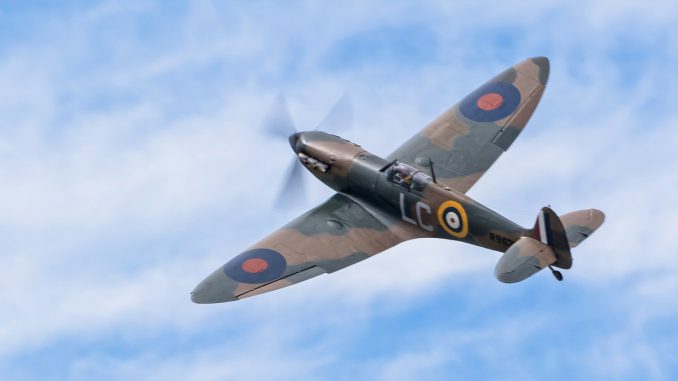
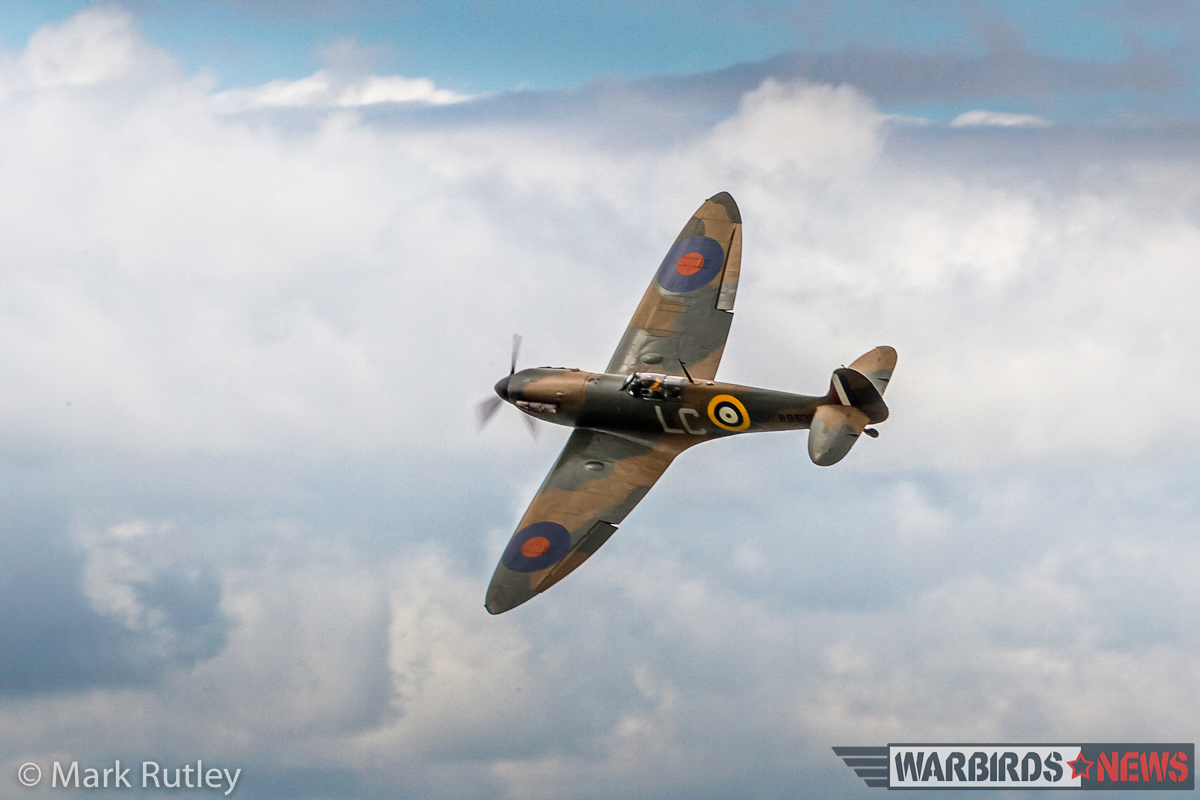
Dunkirk – The Motion Picture Film
by Richard Mallory Allnutt
WarbirdsNews reader, Mark Rutley, recently sent us some fabulous images he took recently while observing flight operations for the upcoming epic film, Dunkirk, currently being filmed at various locations in Britain, France and the Netherlands. Directed by Christopher Nolan, the film will portray the extraordinary drama surrounding the miraculous evacuation of nearly 340,000 British and Allied troops from the beachhead in Dunkirk, France between May 26th and June 4th, 1940 amid the onslaught of a withering aerial assault from a rampant Luftwaffe.
The intense teaser trailer for the movie is HERE
Christopher Nolan is known for filming things practically, with a minimal amount of CGI, so he is using real aeroplanes, people and equipment as much as possible, and filming on the actual beaches in France where the events actually took place. He has even gone so far as to resurrect a long-retired French warship, the Maillé-Brézé, for some of the scenes as well. While this ship is a post-war example, it is close enough in character to a WWII-era destroyer that most movie-goers won’t notice the difference.
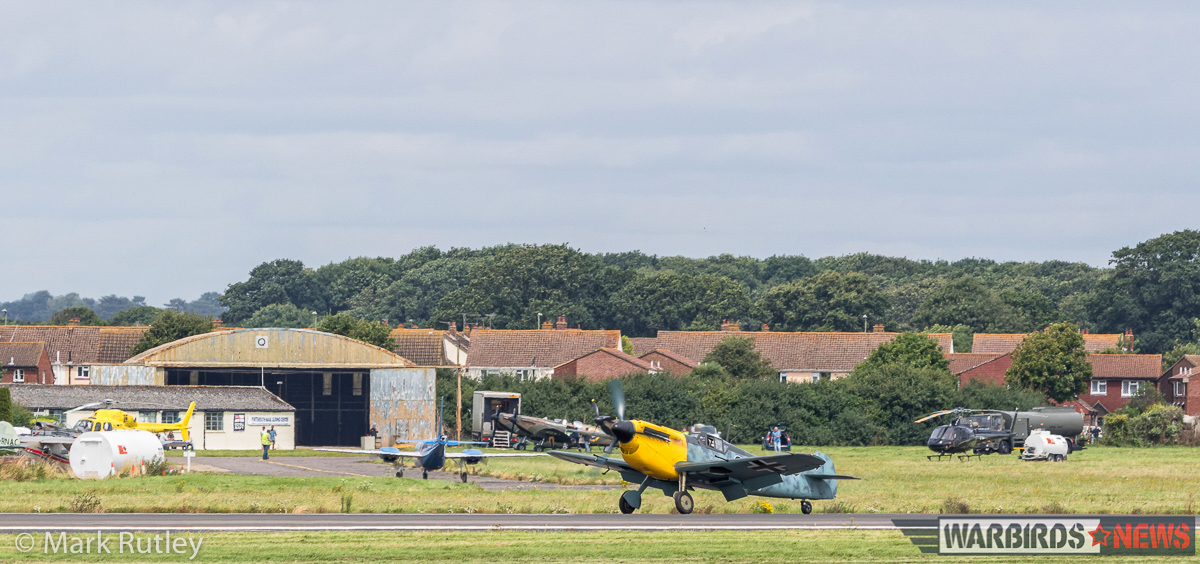
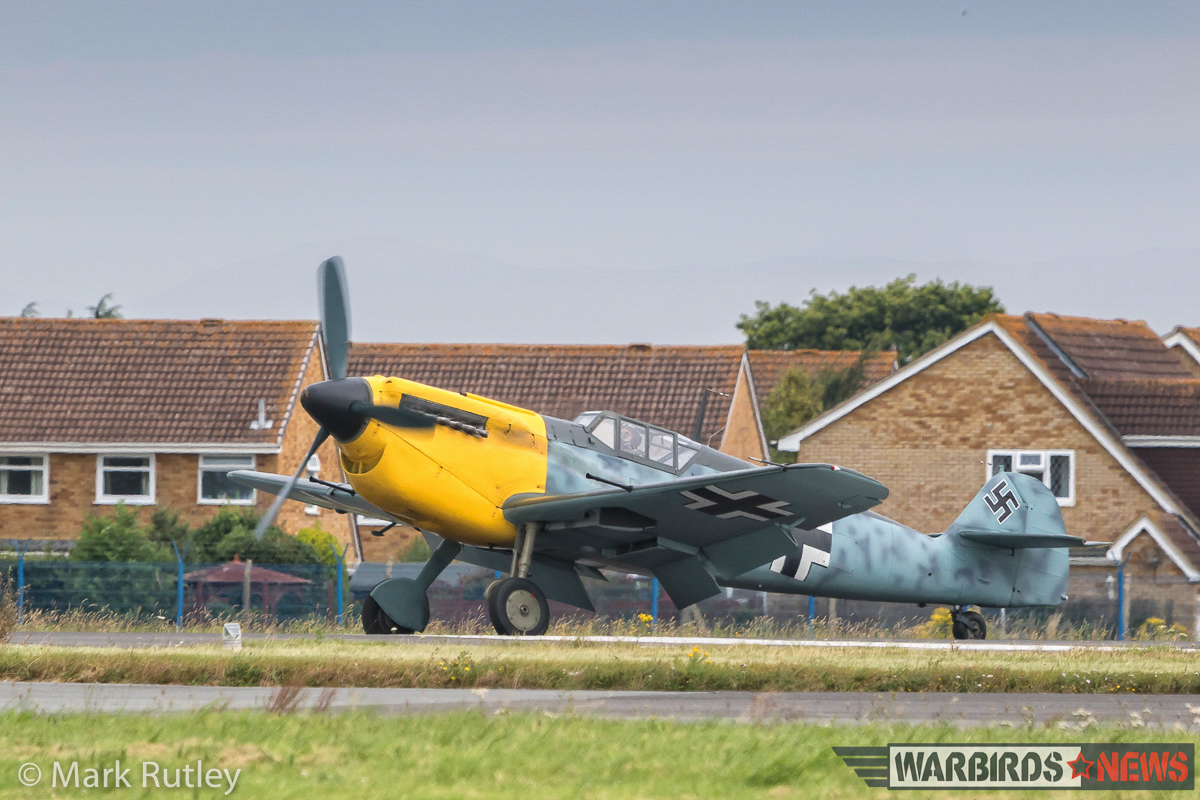
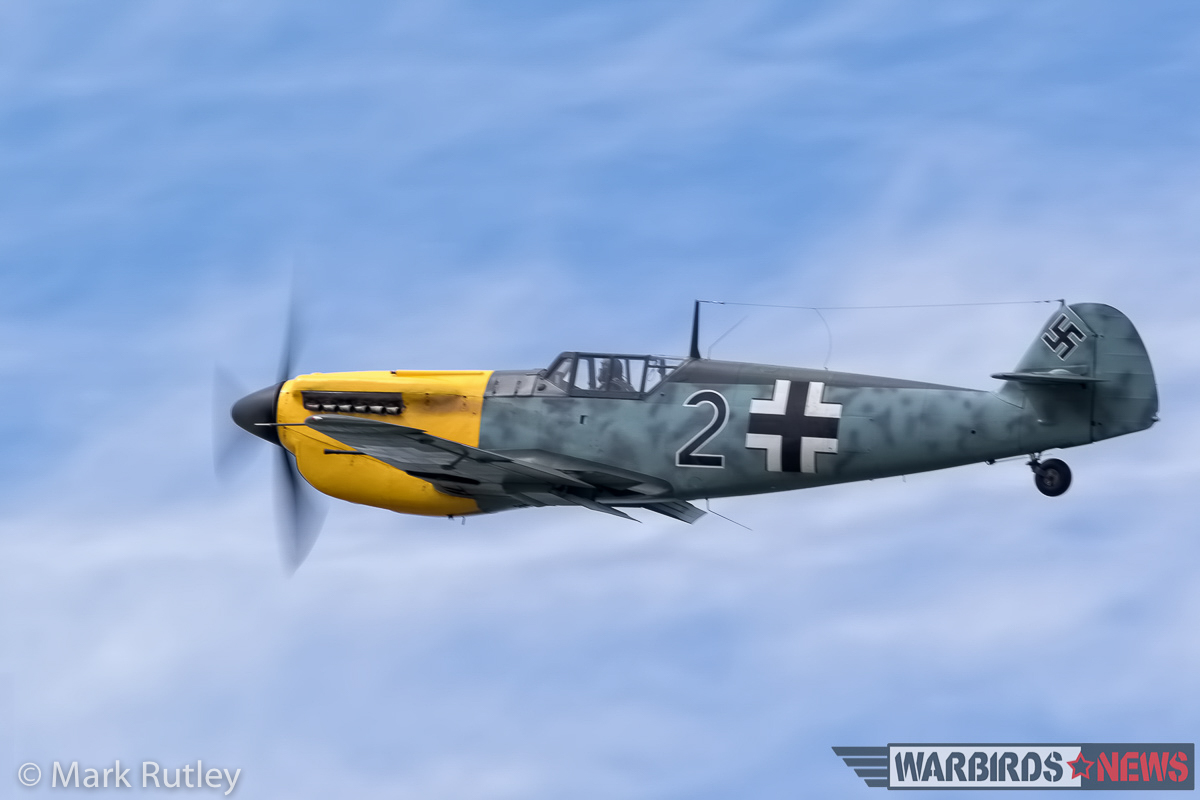
Rutley reports that three Supermarine Spitfires and a Hispano Buchon, masquerading as a Messerschmitt Me 109, were based at Lee-on-Solent Airfield, near Portsmouth, Hampshire for two weeks during filming. The aircraft would fly out from the former Royal Naval Air Station and over the English channel to perform for the cameras. Remotely controlled, large scale replicas for several wartime aircraft were also in use at the airfield, including Heinkel He 111 bombers, Spitfires and Me 109 fighters. Though too far out over the water to photograph, Rutley observed several of the Spitfire and Me 109 r/c drones filmed as they crashed into the channel, presumably as a result of ‘combat damage’. No doubt the film makers will enhance these scenes with CGI to give an authentic feel to them.
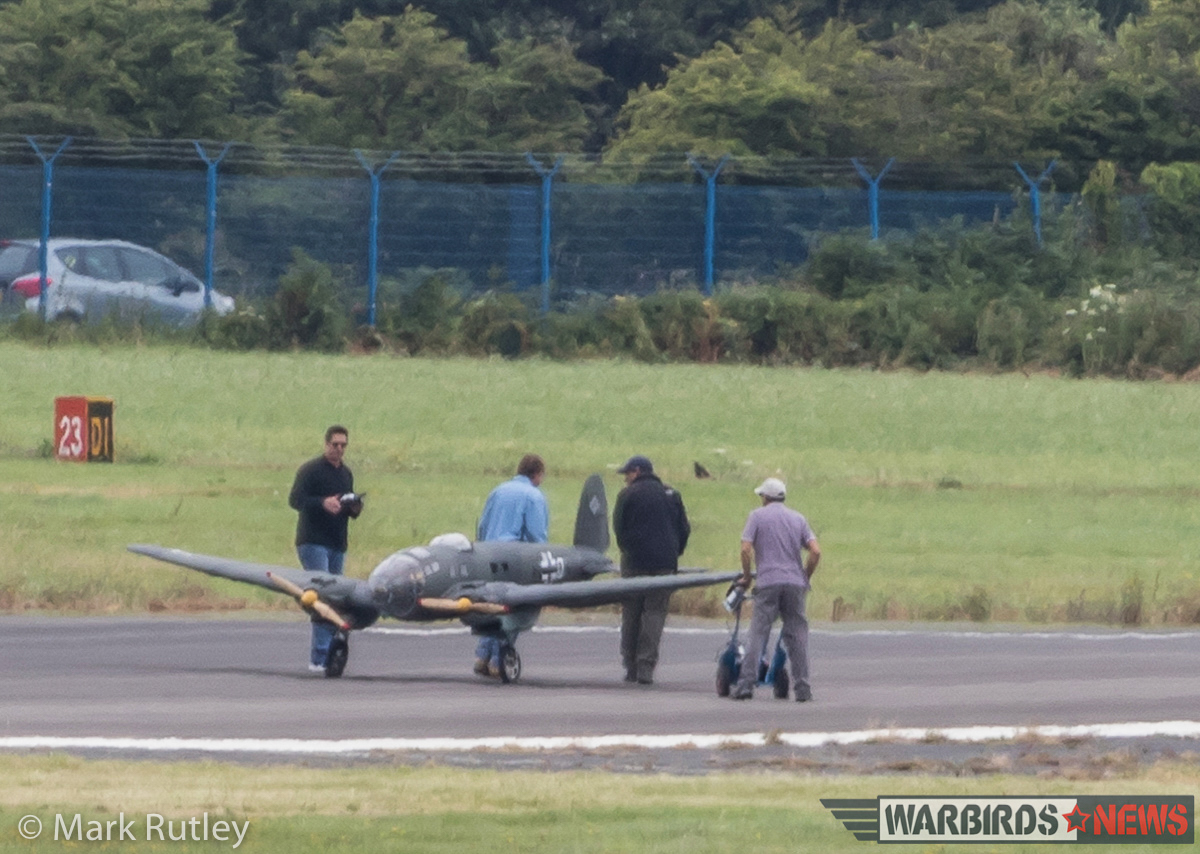
The Hispano Buchon, painted to resemble an early-war Messerschmitt Bf 109E, is owned by Historic Flying Ltd. The three Spitfires taking part (two Mk.Ia’s and a Mk.Vb) were all painted in period markings, and included the unusual black and white underbelly camouflage. The rare fighters belong to American billionaires Tom and Dan Friedkin: Mk.Ia AR213 (marked as R9632), Mk.Ia X2650 (marked as R9612), and Mk.Vb EP122 (marked as Mk.I R9649). Interestingly, none of the Spitfire serial numbers worn during filming were those of actual Spitfires, but belonged to RAF Avro Anson Mk.Is. The squadron code ‘LC’ was spurious as well, having never been worn by an RAF Spitfire squadron, just the station flight at RAF Feltwell in Norfolk, East Anglia… well away from the Dunkirk beaches. Quite why the movie makers chose to do this is open to speculation, but a reasonable guess would suggest it was to keep the aircraft authentic-looking, while at the same time acknowledging that the events portrayed in the film were representative depictions, rather than totally factual ones. Therefore the stories shown will be a testament to the service and sacrifice of all involved, rather than to a few specific people and units. This seems like a fair way of doing things, and also allows more freedom for the story to combine disparate events into a more unified narrative that can actually be told within the confines of a two-hour film.
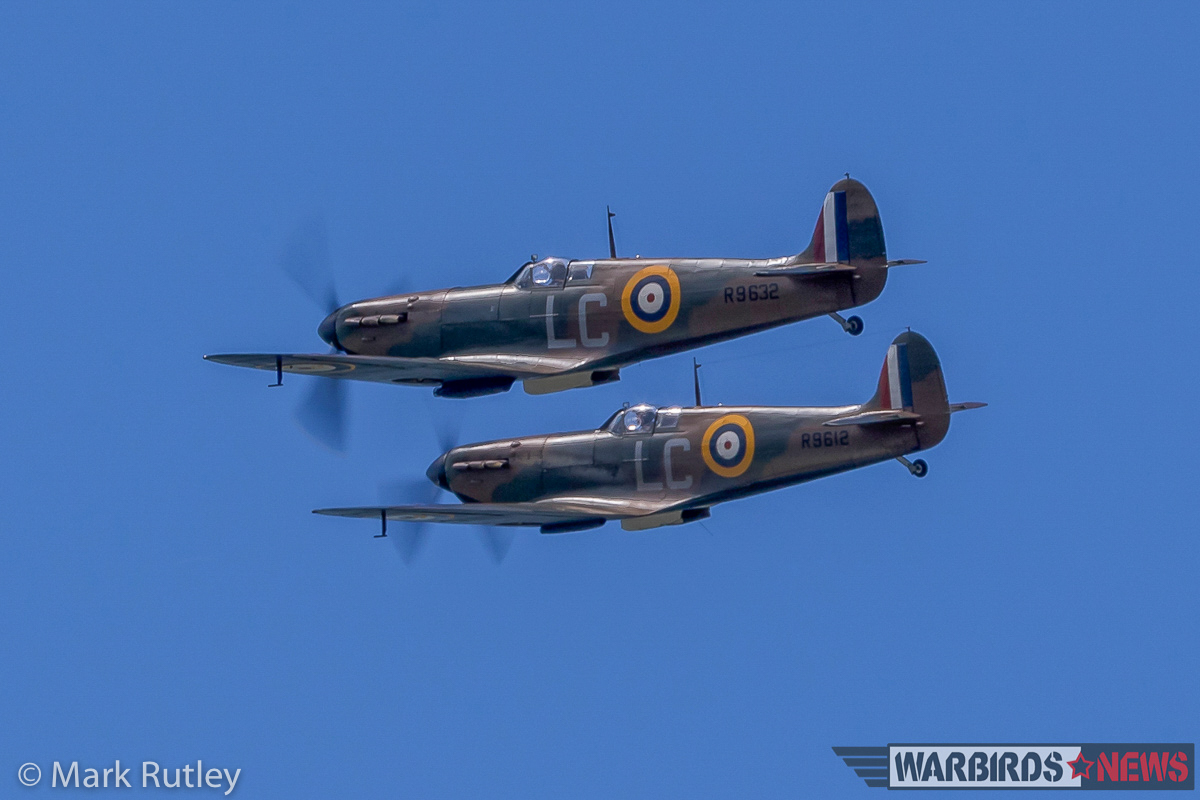
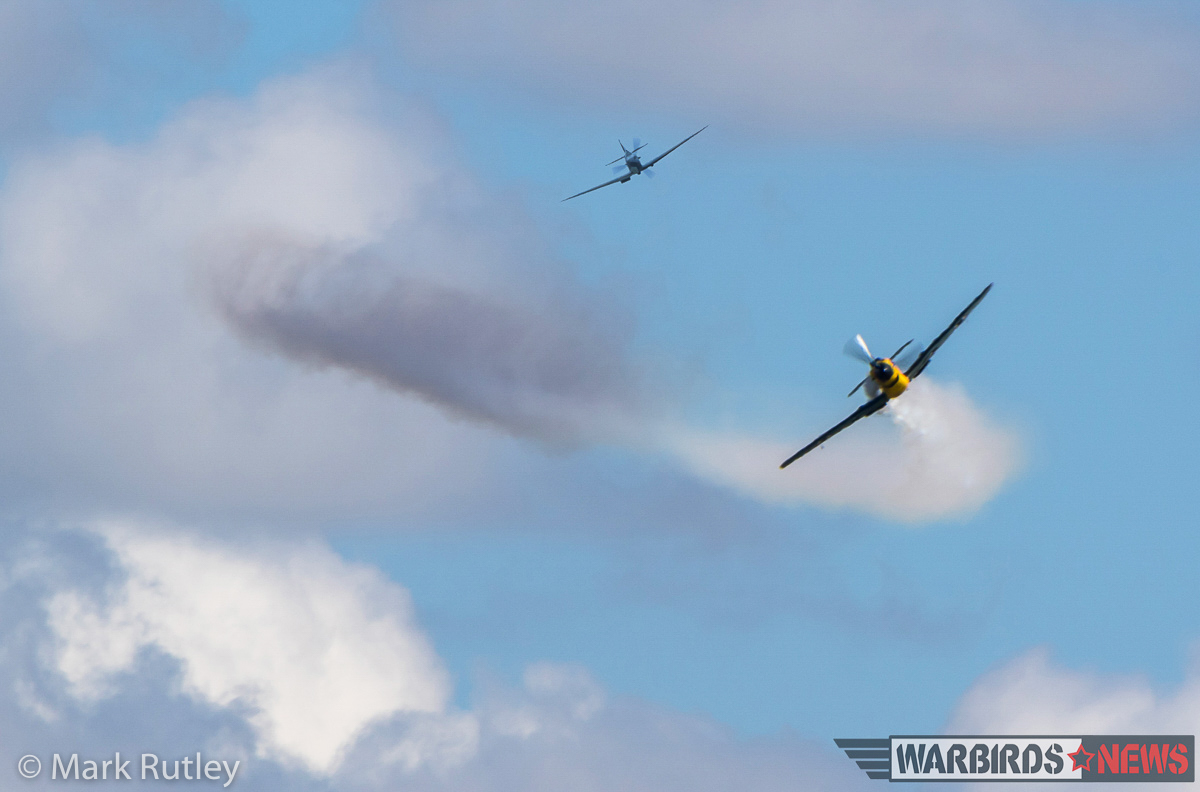
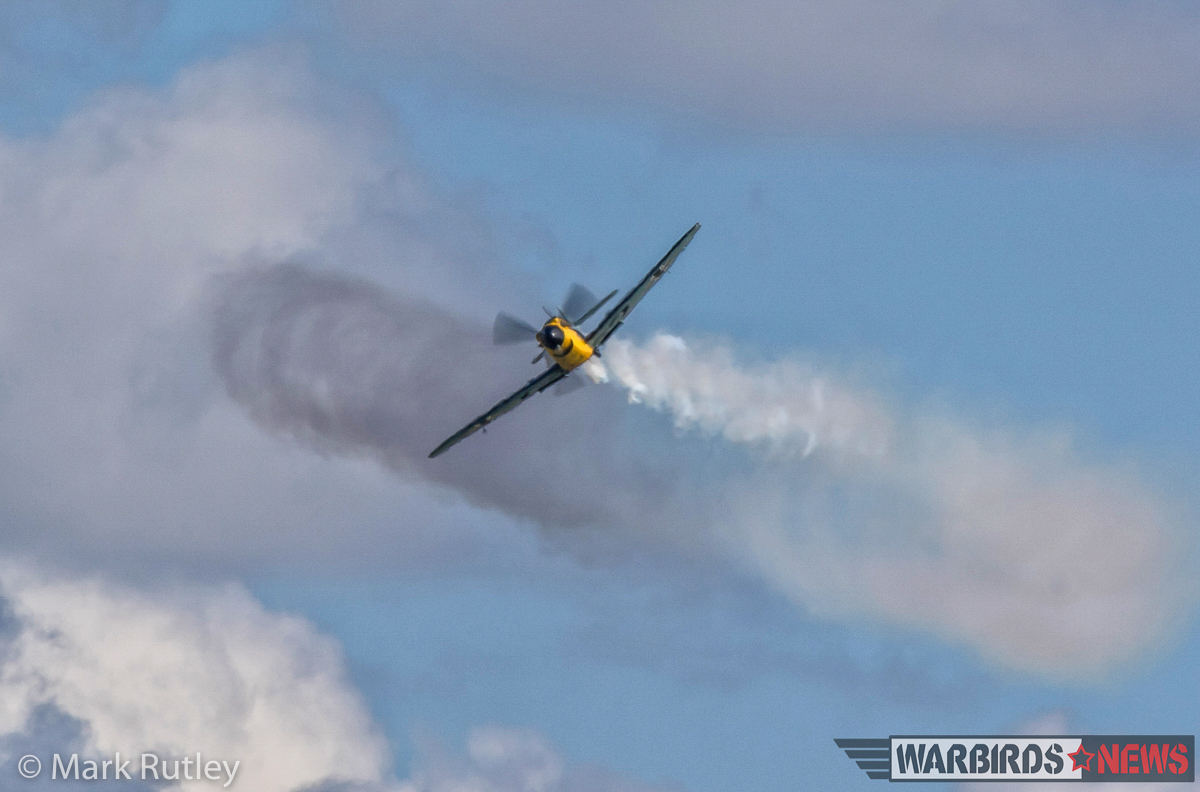
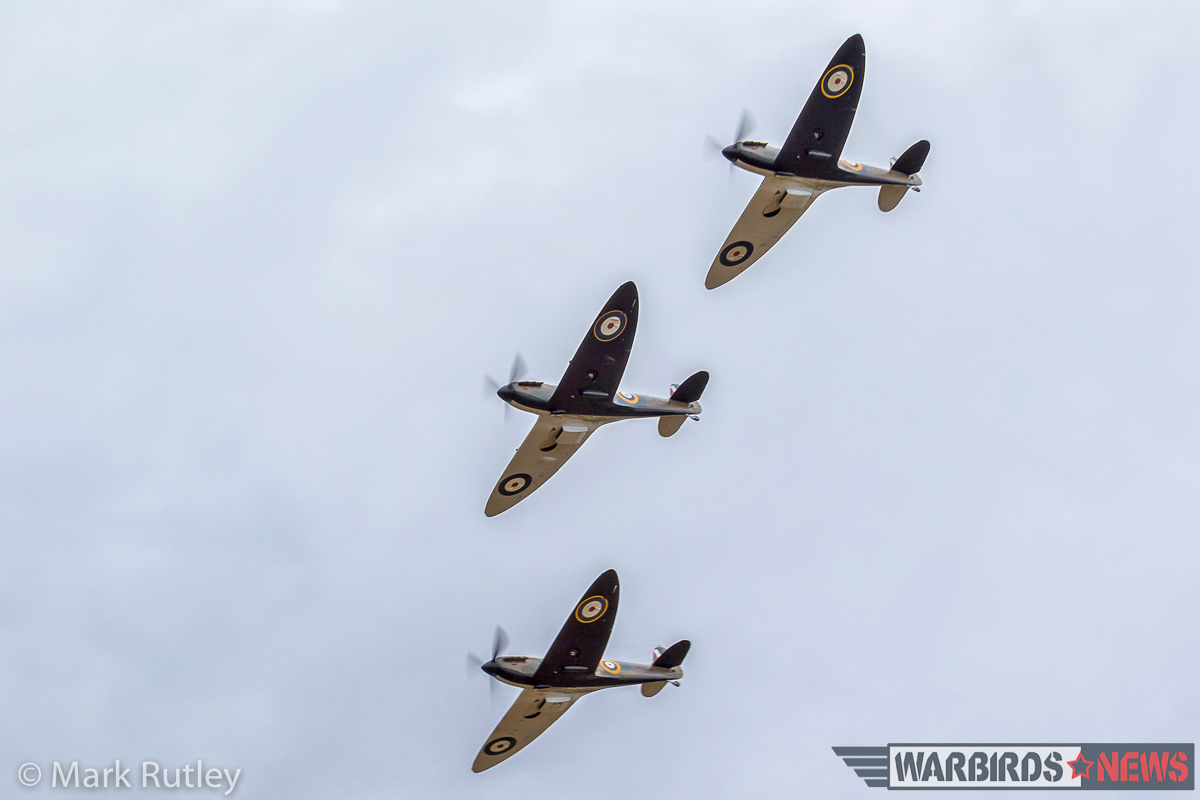
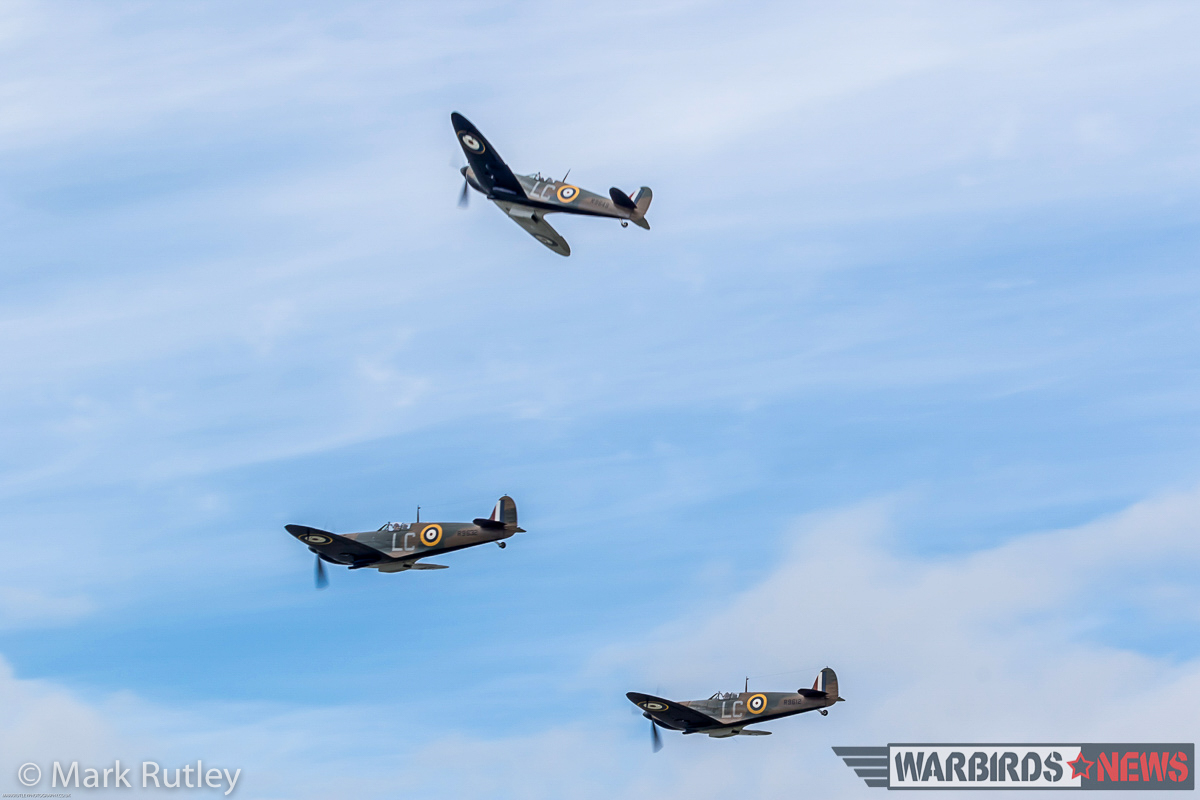
Rutley said the aircraft made about twelve sorties a day on average, for filming dog fights over the English Channel and Solent waters. Each time they returned in tight formation, made a low run over the airfield and then broke for landing individually.
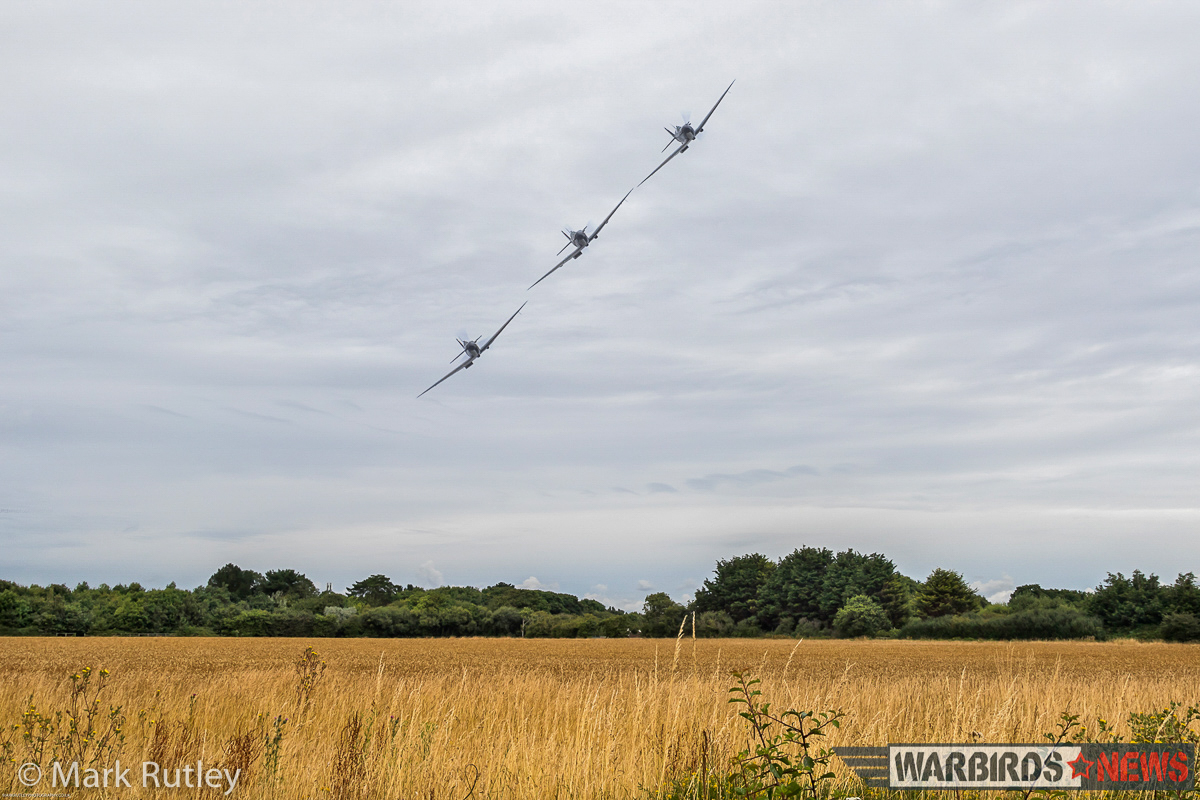
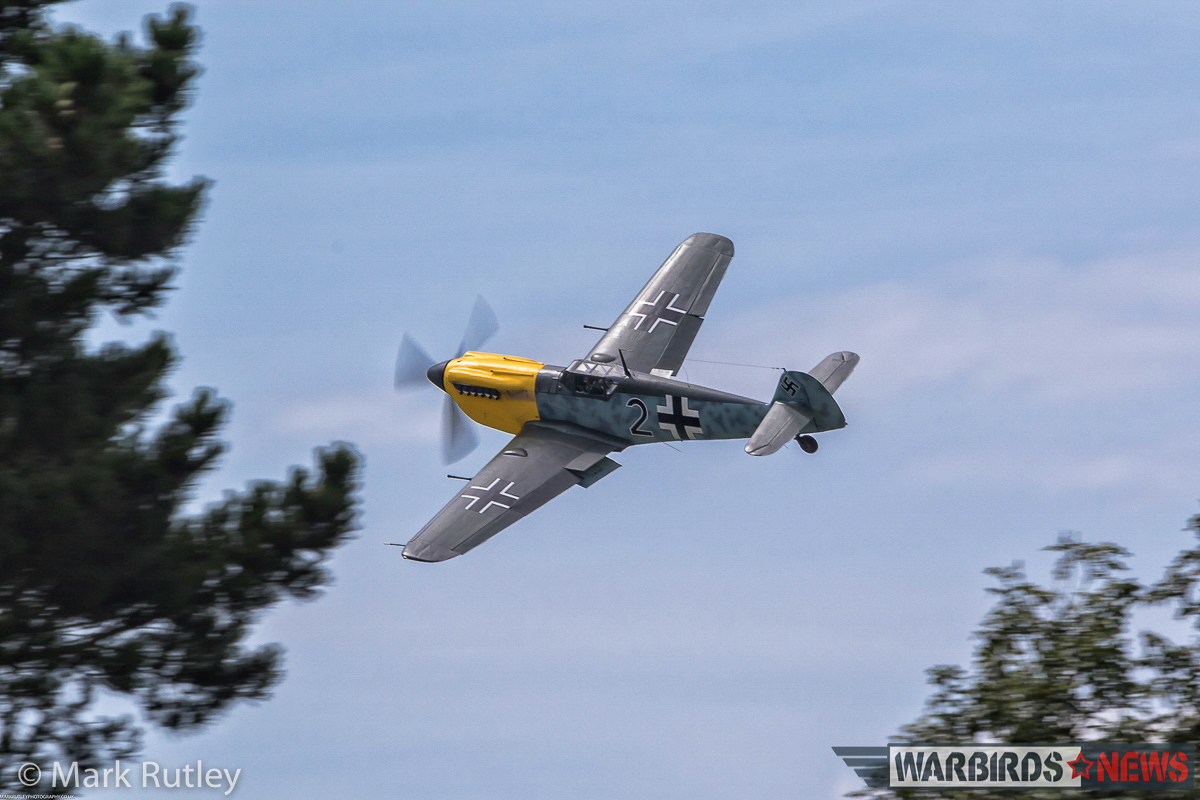
The film is due for release next May, on or about the 77th anniversary of the miracle of Dunkirk. Given Christopher Nolan’s prodigious gifts as a film-maker, it is sure to be a fantastic, visual feast of a movie, and one most will find worthy of the terrifying stories of sacrifice and survival it is attempting to portray.
DUNKIRK – OFFICIAL MAIN TRAILER [HD]
WarbirdsNews wishes to offer our sincere thanks to Mark Rutley for contacting us, and allowing the use of his photographs. If you would like to see more of his work, please do visit his photography website HERE.


great news.
Excellent write-up. Small correction – the film will be coming out July 21st in the UK and USA.
I know Mark very well and we are old Royal Navy shipmates. His photography is always very good and of the highest quality, as can be seen here.
I do hope we have turned the corner on the overuse of CG that has wrecked several films. I am tired of seeing fighters buzzing around like insects moving in aerodynamically impossible ways. While there are no Heinkels to borrow from Spain as in the 1965 production of The Battle of Britain, this looks really good, and I eagerly await seeing the film.
The Battle of Britain movie was released in 1969 not ’65…8)
I think the last heinkels crashed in Montana. It was from the Arizona Wing of the CAF. It was used in the movie Battle of Britain and Patton.
@Colin Brown:
I totally agree.
To mention Battle of Britain: Ridley Scott wants to make a Remake of it: http://variety.com/2017/film/news/ridley-scott-battle-of-britain-world-war-ii-1202021890/
But i think it won´t reach the original one 😉
I agree totally. Guy Hamilton in 1969 created a visual masterpiece using genuine era aircraft supplied by the late Hammish Maddie. I am an aviation historian and am open to seeing what Mr. Scott can do however, as I love historical aviation films. In my humble opinion Battle of Britain, in my mind still stirs excitement. Thank you.
I think the only ‘improvement’ to be made would be a more accurate representaion of German aircraft (obviosly CGI required) used, such asBf110, Do217 and JU88 .
My father was a Dutch Pathfinder who flew Mossie in the 139th. He developed a great friendship with Hammish. I was fortunate to meet and drink Scotch with him once. “Press On Regardless..”
In the trailer there is also blenheim (making a low fly by). Is this the one they got airborn in 2015 and was present at Duxford flying legends the same year?
We supplied 2 full size static replica spits for this film (and a mid section for a gimble and) and a tail unit.
One was sent to The Netherlands to film a crash scene, the other to USA for close up work i guess.
We are currently making something a bit special for the premier (but i cannot reveal what at this time!?)
Dave, thanks for additional these details. Please when you can, we would like to know something more about the premier!
I am sorry for the extremely late reply. I never recieved an notification of your reply to my original post.
For the Premier of Dunkirk, we (Gateguardsuk, Newquay airport)
Built a cockpit fuselage section with a semi detailed cockpit and functioning controls for use with an internal virtual reality unit.
The computer hardware located in the section below the aerial, linked to a goggle type vr headset
I heard through the grapevine that somebody got excited and pulled too hard on the control column and broke off the spade grip.
So far as i can tell, it was then just used as a display piece between two mannequins in period uniform for the premier.
I have many pictures of this VR cockpit as we were working on it.
much more awaited from Nolan
Wrong 109’s…you’d think Nolan would get it right…or at worst do correct 109’s in CGI…these Spanish 109’s were ok in the ole Battle of Britain…but we’re in the digital age for crissake. Really takes me out of the illusion when I see the incorrect tanks and planes.
Well, DB-powered ‘109s’ were not available for filming, and aviation CGI is usually a disaster, so Nolan went with the next best thing. The cinematography was breathtaking at times, so I really think you are being far too critical. Most filmgoers wouldn’t notice/care that Buchons were in the frame… or at least accept them as being a necessary compromise.
I’m with Da Han on this. I also immediately noticed the Hispano-engined 109. Incidentally, how did they manage to recreate a squadron of authentic-looking Ju87 Stuka dive-bombers in the trailer? I can’t imagine real Jumo-powered ‘Stukas’ were available for filming? So why shouldn’t the same respect be paid to the Bf109 and every effort made to depict it with accuracy? Sorry, the ‘Hispan-oh-nine’ with it’s ungainly, oversized engine just looks plain wrong and out of place.
I imagine that they had to use the Buchons if they also wanted to use the Spitfires in the combat scenes… using CGI or R/C opponents would have made it harder to capture a realistic dogfight with real humans flying them. The Ju-87s were r/c scaled models, augmented by CGI, which they could get away with as they didn’t have the same complicated aerial duels that the Spits and Buchons did. No film is ever going to be a perfect reflection of the exact way history took place… the story itself is a compromise of what actually happened, and we all know that going in… so nitpicking small details like seeing Buchons instead of real 109s is rather a waste of breath. No film is perfect, but it was a far, far superior film to pretty much any aviation-related war film in decades… and more importantly honored the men— and their sacrifice— in that horrific battle about as well could ever be done. Just be thankful it wasn’t like George Lucas’s Red Tails…
there are two DB engine 109’s flying today, shame they couldn’t get one in for this film
I was also very disappointed to see the use of actors, rather than the original 1940’s soldiers, sailors and airmen. ;-p
Da Han and GB should get lives of their own. In war you make do with what you’ve got, and I guess it’s the same when you’re making a movie. I have personally ransacked a dump of crashed aircraft in Iraq to find material for a part inadvertently left behind in the rush to deploy. Was the part I made with the help of an Iraqi welder genuine? No. Did it work? Yes.
Want CGI 109s? Watch Red Tails.
Nolan needs to do a remake of “Reach for the Sky”. Baders story is so good, how can they not do it! I hope Hollywood responds well to this movie.
Probably because there are no Americans in it!
John Turnbull… Please… Do you honestly know how idiotic this comment sounds? I am both American by birth and British by naturalization and ancestry. I have family on both sides of the pond who fought in combined effort. Hollywood does make movies that are not centered around America. I am not saying that Hollywood is the best at making all movies, but neither is British film production as I have seen British films that still have many inaccuracies in them. Comments like the one you have stated are unnecessary.
Argh. See how the language has changed thanks to idiotic media who don’t know anything? NOTE to the author… Radio controlled scale model airplanes ARE NOT “DRONES”!!!!!!!!
This movie may just breakeven…. The drawing cards of a great director and rockstar actor don’t make up that this “faceboob” teen age vampire generation really do not care about the sacrifices and stories of World War II……
Wow! I appreciate your passion for authenticity but I would hate to think you won’t see the movie because the 109 is not completely correct.
Just came back from seeing it and the dog fight scenes are terrific. So great they can mount small cameras all over the plane to get some very cool angles. Seeing them cross each other views from those cameras with the horizon tilting ans drifting was excellent.
Great job with the audio , especially the shuddering in the cockpit pulling their tight turns.
The amazing thing is that they were actually not “small cameras”, but gigantic IMAX cameras.
Are those Me 109’s not in the wrong colors. Correct me if I am wrong but yellow nose 109’s were painted like that during the battle of Britain……was difficult in the beginning to separate friend from foe in the early days of dogfighting and the Lufrwaffe painted their fighters with yellow noses…..
He painted the noses yellow, so you could tell the difference between the planes during the flight scenes. Was most useful when the trailing fighters were shown in the cockpits mirror.
Pity Hurricane P2902 wasn’t restored in time for this movie. But even if it was, it probably would’ve been too risky considering the time, money and effort that was put into restoring her. Having said that, I’m very grateful to have seen my beloved Blenheim in the film (even if it’s only one scene).
Also shame there’s no authentic Bf 109E. But it’s understandable seeing as the only airworthy type is in the U.S., and bringing it all the way to England for filming would’ve been costly. Even the Polish destroyer Blyskawica served at Dunkirk and survives today, but is preserved in Poland.
It’s actually Spitfire X4650, not X2650.
Yesterday I went to see Dunkirk. I believe the aerial scenes were the best I have seen in my 76 years. Heart-stopping. It will get many, many accolades including emmy awards. Wow.
RCN
Better than The Battle of Britain? Haven’t seen Dunkirk yet?
The forward shot and rewards shot of the fuselage and tail of the Spit during dog fight scene is totally wrong!.
What did they use with the Merlin exhaust stick on? A simple single engine trainer?.
Just read they used a YAK 52.
“He incorporated a lookalike Yak-52, a two-seater Soviet-era aircraft, for added shooting space in the cramped cockpit, dressing it to look like a one-seat Spitfire. “
some yo yo on a site related to this post claimed that the 109s were mustangs!!!
Oh my! Well, Mustangs have stood in as ‘109s in a few films in the past, but not this one…
Note to Jim …… Aircraft or Aeroplanes …. not Airplanes!
just a question but didn’t the Mkii a spitfire have a 2 bladed propeller?
The first seventy or so Spitfire Mk.Is had the Watts 2-bladed, fixed-pitch propellers. The deHavilland three-bladed variable-pitch propeller replaced these on the production line sometime in 1939, and as far as I know, the existing aircraft with the two-bladers were retrofitted to the variable pitch design. Rotol 3-blade propellers were also used in Spitfire Mk.Is as well. With Spitfire Mk.IIs not going into production until June, 1940 nor reaching Squadrons in the field until August, 1940, it’s safe to say that the Spitfire Mk.II never went into production with a two-blade propeller.
A magazine dated 1937 shows Spitfire K5054 with a two-bladed propeller. In Alex Henshaw’s book “Sigh for a Merlin” he describes his first flight in a Spitfire: it was K9793, a Mk I with a Merlin III engine and a three-bladed two-position propeller. The date is not clear, but probably mid-November 1939. He made much of the clumsy handle required to manually jack the wheels up and down.
Henshaw flew his first Mk II from the Castle Bromwich factory in June 1940.
We attempted to use ME109E’s in this production. The owner of the one in Seattle was not interested in lending us his aeroplane. The Marseille aircraft at BQH was not ready in time. Re use of Yak for on board camera shots…I couldn’t find any Spit owners who would allow us to hack apart their aeroplane in order to fit the huge IMAX cameras…….
A question.While the movie depicts Spitfires as the RAF fighter planes . Some Historians say it was Hurricanes that were the fighter planes over Dunkirk
One author says”When the German advance came, the RAF quickly and painfully discovered their weaknesses. The Fairey Battle and Bristol Blenheim bombers were decimated as they tried to attack the German forces, with losses of 75% or more on some missions. The pilots of the Hawker Hurricane fighters struggled with the sheer number of Luftwaffe fighters, and many young pilots and their aircraft were lost as they tried desperately to protect the vulnerable bombers. In a matter of days many squadrons were all but destroyed, and several remaining had more pilots than aircraft.”The Role of the RAF in Dunkirk” by Baxter.
Any suggestions?
The Bolton Paul Defiants were not much use either.
Dunkirk was the first time the Germans met Spitfires in any appreciable numbers. The RAF caused significant damage but because the majority of combat took place at altitude away from the beaches, their efforts were not appreciated by the army waiting on the beaches. Hence the hostility of the soldiers to the shot down RAF pilot in the film. Its a shame they couldn’t have used Spitfire 1 N3200 which was an actual Dunkirk combat veteran.
There were Spitfires over Dunkirk –Stanford-Tuck shot down an ME-110 in his Spitfire.
Churchill mentions “all types” without being more specific. Shirer mentions Spitfires, but as he was following a Panzer division into France may not have got close enough to Dunkirk to see.
Just checked other books in my library. The Messerschmidt pilot had only just gone solo so was nowhere near Dunkirk. The Stuka pilot arrived at Caen a few days after the embarkation so took no part in the action. In “RAF Biggin Hill” Graham Wallace recounts many sorties by Spitfires and Hurricanes. He includes the note “A pilot of 213 (Hurricane) Squadron who had crash landed on a beach north of Dunkirk was prevented from embarking on a ship by an embittered army officer.” So the final movie scene has some connection with reality.
ok i have to say it! what was the deal with a spitfire being able to glide from less than a thousand AGL for about 20 miles or so it seemed. saw the movie last night and enjoyed it but what was that finale. and then taking the time to put the gear down to land on the beach? liked the movie but a little more prologue and epilogue surrounding the events that led them to this terrible situation would have, for me, been wonderful. great cinematics though.
i believe, they was use bf-109, there are various, no must use hispano.
they don’t want to know, tham public of this movies now have more knowledge. don’t respect to the new public.
i believe …
and the stukas are CGI … can make same or use bf-109E tham flying yet. there are.
It is a masterful film. Great pains were taken to convey this magnificent event authentically. Given the paucity of specific aircraft from 1940, those who assembled the inventory and the crew who staged and portrayed the aerial combat have set the bar very high. Quibbles about exactitude are futile. It’s a movie, cut some slack and be grateful for the talented people who made it.
I sent a message yesterday. Will it be posted?
I am an old Retired US Naval Officer who watched the 2+ her movie ‘The Battle of Britain’ at age 16. I loved that film. As for the ‘Dunkirk’ movie, I thought it ‘grand.’ DUNKIRK was magnificent in its own right. Sometime courage come to those who never could see themselves in that role. Using chalk to keep track of fuel consumption, along with little talk in the cockpit, shows flight discipline and problem solving that pilots learn from constant problems learned from many hour of flight training/experience. The seeming long glide of the last Spitfire was possible, considering how strong the wind currents are known to be in the Channel area. Notice that Tom Hardy landed into the wind and where the sand was wet and hard. A friend’s father told a story of two USAF F-86 jet fighters landing on the wet sand along the Korean coast w/o incident during the war. Maintenance crews fueled and services the Sabers before successfully taking off and heading for base. Well done Mr Nolan.
What I am about to write is amazing. I just picked up an aviation magazine at the news stand on RAF fighters. In it is a color plate (profile) of a Spitifre that landed on the beach during the evacuation at Dunkirk due to battle damage. I am confident he landed into the wind on the hard wet sand. The real RAF pilot’s name was Hardy (actor Tom Hardy played the movie pilot, although his character had a different name). Hardy failed to destroy his Spitfire and the Germans repaired it and used it for evaluation purposes. The color plate shows the plane painted with German crosses and Lufwaffe markings, so it is possible it survived the war. Hardy remained a POW until the end of the war. WOW!